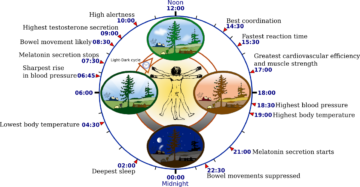Philip Maughan at Noema:
 Over the last few years, there has been a groundswell of podcasts, wellness apps and self-improvement social media videos alerting a mass audience to the potential of applying circadian science. It was a slightly non-PC meme in which an anxious party attendee plans to head home “to protect my circadian rhythm” that made me think new, younger audiences were taking note.
Over the last few years, there has been a groundswell of podcasts, wellness apps and self-improvement social media videos alerting a mass audience to the potential of applying circadian science. It was a slightly non-PC meme in which an anxious party attendee plans to head home “to protect my circadian rhythm” that made me think new, younger audiences were taking note.
We’ve progressed from what was really fringe science in the 1980s “to a truly exquisite mechanistic understanding of how these rhythms are generated,” Russell Foster, professor of circadian neuroscience at the University of Oxford, tells me. Foster’s book “Life Time: The New Science of the Body Clock, and How It Can Revolutionize Your Sleep and Health,” has been a surprise best seller. “It’s very satisfying for me to see how it’s exploded,” he says.
For example, a viral YouTube video entitled “The Optimal Morning Routine – Andrew Huberman” by After Skool animates advice from the wildly popular Stanford professor, who recommends viewing outdoor light within an hour after waking, even if it’s cloudy.
more here.
